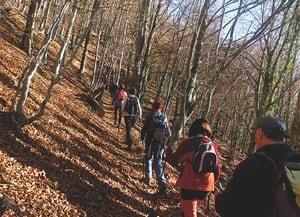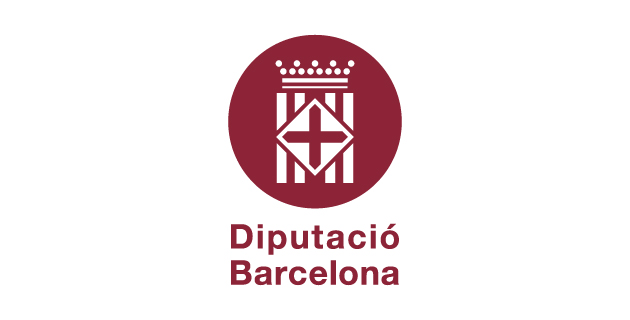Case Study
Healthy paths in periurban natural areas
Contact name
Carles Castell
Institution name
Provincial Council of Barcelona
Region & country
Province of Barcelona, Catalonia, Spain.
Summary
Many municipalities in the Province of Barcelona showed their interest to develop healthy paths and complementary activities with the support of the Provincial Council (Diputació de Barcelona). In 2018, the Provincial Council started a pilot project in four municipalities, close to protected areas. Main goals are, on the one side, to promote physical activity of people in periurban natural environment, as a healthy habit; on the other side, some tracks and activities are specially focused on target groups with specific disorders (mental diseases, chronical pain…). Nowadays, several municipalities have these programs underway. At the same time, a toolkit to provide advice and recommendations on how to put in practice these initiatives has been created.

Group of people practicing nordic walk on a healthy path
Author: XPN
Background of the project
The Provincial Council of Barcelona manages a network of 12 protected areas around the Metropolitan Region, where five million people live. These parks provide many facilities and activities to promote health in natural surroundings not far from cities. There exists a high demand of green environments to develop daily activities. In periurban areas, these activities become accessible for all kinds of people.
From different sources (municipalities, health sector, parks’ visitors, etc.), the Provincial Council of Barcelona realised the high demand of places (especially paths), very close to cities, for people to contact nature and to develop physical activity. At the same time, these areas could be suitable for therapeutic activities for some target groups identified by health practitioners.
Solution and actions taken
Because the background of the municipalities was very different, we developed a pilot project with four of them, with the objective of adapting our support and final actions, to their real demand. Thus, in some cases new healthy paths have been established; in other places, paths were already there and the need was to liven up the activities; and in some other cases, direct collaboration with local health sector has been key to reach target groups with specific health needs.
The first and common action in all the municipalities was to identify key local stakeholders –politicians and experts, medical practitioners, environment managers, NGOs and associations…– and to hold several meetings to agree the scenario and to prioritize the actions. These actions can be new healthy paths, or areas for healthy activities; programs to encourage more people to use them; collaboration with health practitioner to start therapies with target groups (i.e., mental diseases), etc.
Other institutions or parties involved
On the one hand, there are partners on global level, as managers of protected areas, environment and health departments on provincial and regional level, etc. On the other hand, on local (municipal) level, all the stakeholders from environment and health sectors (public, private, social) have been involved.
Results
Nowadays, several municipalities have a network of healthy paths (in terms of length, slope, shadow, signs…) to promote relax and physical activity in natural surroundings. In addition, some other ones keep a program of activities (path guidance, therapeutic treatments for target groups…) by themselves with some support from the Provincial Council. At the same time, some initiatives on Catalan level have emerged, through collaboration of public and private partners from health and environmental sectors.
Challenges
In some municipalities, it has been difficult to find suitable natural places, accessible, close to urban areas. In some other, a big effort is needed to keep the involvement of the different partners to maintain defined programs and activities, because a lack of time or resources.
Lessons learned
The main lesson is that there is not a unique and right solution for all the places. Each municipality (or protected area) has a different background and needs. Thus, it is essential to identify local stakeholders, to develop a common analysis of the situation, define priorities and start key actions together. At the same time, it is necessary to have a global (regional) approach, with a strong agreement between health and environment sectors.
Contact name
Carles Castell
Institution name
Provincial Council of Barcelona
Website(s)
